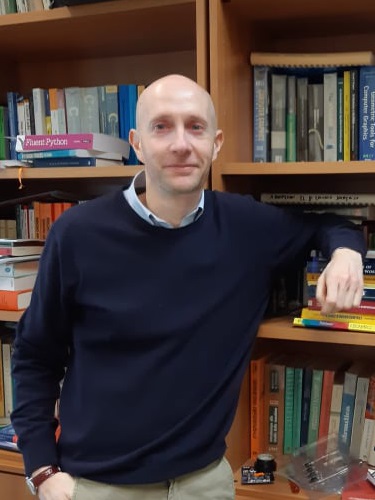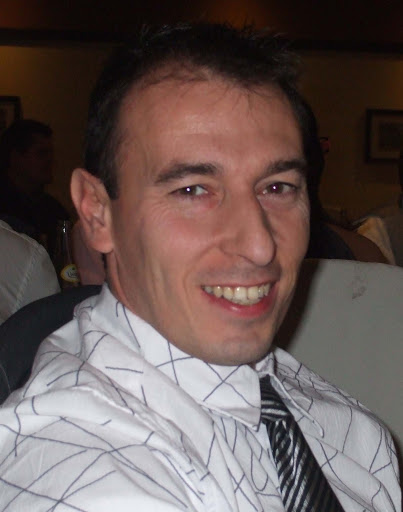Keynote 1: Set-based approaches for diagnosis and fault-tolerant control
This plenary session reviews the use of set-based methods in fault diagnosis (FD) and tolerant control (FTC). Set-based methods use a deterministic unknown-but-bounded description of noise and parametric uncertainty.
These methods aims to check the consistency between observed and predicted behaviour by using simple sets to approximate the exact set of possible behaviors (in parameter or state space). When an inconsistency is detected between the measured and predicted behaviour obtained using a faultless model of the systems, a fault can be indicated. Otherwise, nothing can be stated.
The same principle can be used to identify interval models for fault detection and to develop methods for fault tolerance evaluation.
Finally, some real applications will be used to illustrate the usefulness and performance of set- methods for FDI and FTC.

Prof. Vicenç PUIG, Polytechnic University of Catalunya - Spain
Vicenç PUIG received the telecommunications engineering degree in 1993 and the Ph.D. degree in Automatic Control, Vision, and Robotics in 1999, both from Universitat Politècnica de Catalunya (UPC).
He is Full Professor of the Automatic Control Department and a Researcher at the Institut de Robòtica i Informàtica Industrial, both from the UPC. He is currently the Director of the Automatic Control Department and Head of the Research Group in Advanced Control Systems at UPC.
He has developed important scientific contributions in the areas of fault diagnosis and fault tolerant control using interval and linear-parameter-varying models using set-based approaches.
He has participated in more than 20 European and national research projects in the last decade. He has also led many private contracts with several companies and has published more than 100 journal articles and more than 350 in international conference/ workshop proceedings.
He has supervised over 15 Ph.D. dissertations and over 40 master’s theses/final projects. He has been the vice-chair of the IFAC Safeprocess TC Committee 6.4 (2014–2019) and currently is the chair. He has been the general chair of the Third IEEE Conference on Control and Fault-Tolerant Systems (Systol 2016) and he will be the IPC chair of the IFAC Safeprocess 2018.
Keynote 2: Texture and colour descriptors for visual recognition: historical overview and applications to computer vision and robotics
Texture and colour, along with shape, gloss and transparency are the visual features that mostly
determine the appearance of objects, materials and scenes. As a consequence, the automatic
characterisation of colour and texture via suitable descriptors plays a crucial role in a wide range of
applications and very diverse areas – for instance defect detection, surface grading and sorting
(process supervision); scene recognition (autonomous vehicles); materials categorisation (flexible
manufacturing systems); computer-assisted diagnosis and prognostication (health management).
No surprise, then, that representing colour and texture in a compact and effective way has been
attracting a lot of research interest for at least four decades.
In the last few years texture and colour analysis has undergone major changes. Traditionally, the
approach to the problem was essentially model-driven, and consisted of designing suitable
descriptors by hand (hence the term 'hand-crafted' or 'engineered' methods). This paradigm has
recently been shifting towards data-driven approaches in which the descriptors are no longer
designed a priori, but 'learned' from the data (deep learning, convolutional networks).
The aim of this talk is to introduce some basic concepts in colour and texture analysis with specific
focus on the differences between traditional (hand-crafted) approaches and those based on deep
learning. The speech will also discuss some applications of colour and texture analysis closely
related to computer vision and robotics, such as surface inspection and grading, defect detection
and development of autonomous systems.

Prof. Francesco BIANCONI, University of Perugia - Italy
Francesco BIANCONI received the M.Eng. In Mechanical Engineering from the University of Perugia,
Italy, and the Ph.D. in Computer-aided Design from a consortium of Italian universities. He has
been a Visiting Researcher with the University of Vigo, Spain; the University of East Anglia, U.K.;
Queen Mary University of London, U.K. and City, University of London, U.K.
He is currently a Professor with the Department of Engineering, University of Perugia, where he conducts
research on computer vision, image processing, and pattern recognition with special focus on
texture and colour analysis.
He is a IEEE Senior Member, Chartered Engineer and Court-Appointed Expert.
Keynote 3: Wireless Sensor Network for rural area monitoring and precision agriculture
Farmers and agriculturalists require the new technology to improve their crops and obtain highest performance from their framing.
Constant monitoring is needed to know the estate of the crops during their growing process and act as soon as any type of disease or plague affects to the plantation.
Wireless Sensor Network appears as the key technology to address these problems. It brings real time monitoring in order to provide precision agriculture.
This speech will show the sensors and sensor nodes developed by our team for this purpose. Later we will review some Wireless technologies currently used for wireless sensor networks.
Finally, we will show several wireless sensor networks deployed for agriculture precision and our last works on Smart Systems and Artificial Intelligence in Wireless Sensor Networks

Prof. Jaime LLORET, Polytechnic University of Valencia - Spain
Jaime LLORET received his B.Sc.+M.Sc. in Physics in 1997, his B.Sc.+M.Sc. in electronic Engineering in 2003 and his Ph.D. in telecommunication engineering (Dr.Ing.) in 2006. He is a Cisco Certified Network Professional Instructor. He worked as a network designer and administrator in several enterprises. He is currently Associate Professor in the Polytechnic University of Valencia. He is the Chair of the Integrated Management Coastal Research Institute (IGIC) and he is the head of the "Active and collaborative techniques and use of technologic resources in the education (EITACURTE)" Innovation Group. He is the director of the University Diploma “Redes y Comunicaciones de Ordenadores” and he has been the director of the University Master "Digital Post Production" for the term 2012-2016.
He was Vice-chair for the Europe/Africa Region of Cognitive Networks Technical Committee (IEEE Communications Society) for the term 2010-2012 and Vice-chair of the Internet Technical Committee (IEEE Communications Society and Internet society) for the term 2011-2013. He has been Internet Technical Committee chair (IEEE Communications Society and Internet society) for the term 2013-2015. He has authored 22 book chapters and has more than 480 research papers published in national and international conferences, international journals (more than 220 with ISI Thomson JCR). He has been the co-editor of 40 conference proceedings and guest editor of several international books and journals. He is editor-in-chief of the "Ad Hoc and Sensor Wireless Networks" (with ISI Thomson Impact Factor), the international journal "Networks Protocols and Algorithms", and the International Journal of Multimedia Communications. Moreover, he is Associate Editor-in-Chief of “Sensors” in the Section sensor Networks, he is advisory board member of the "International Journal of Distributed Sensor Networks" (both with ISI Thomson Impact factor), and he is IARIA Journals Board Chair (8 Journals). Furthermore, he is (or has been) associate editor of 46 international journals (16 of them with ISI Thomson Impact Factor). He has been involved in more than 450 Program committees of international conferences, and more than 150 organization and steering committees. He has led many local, regional, national and European projects. He is currently the chair of the Working Group of the Standard IEEE 1907.1. Since 2016 he is the Spanish researcher with highest h-index in the TELECOMMUNICATIONS journal list according to Clarivate Analytics Ranking. He has been general chair (or co-chair) of 52 International workshops and conferences.
He is IEEE Senior, ACM Senior and IARIA Fellow.